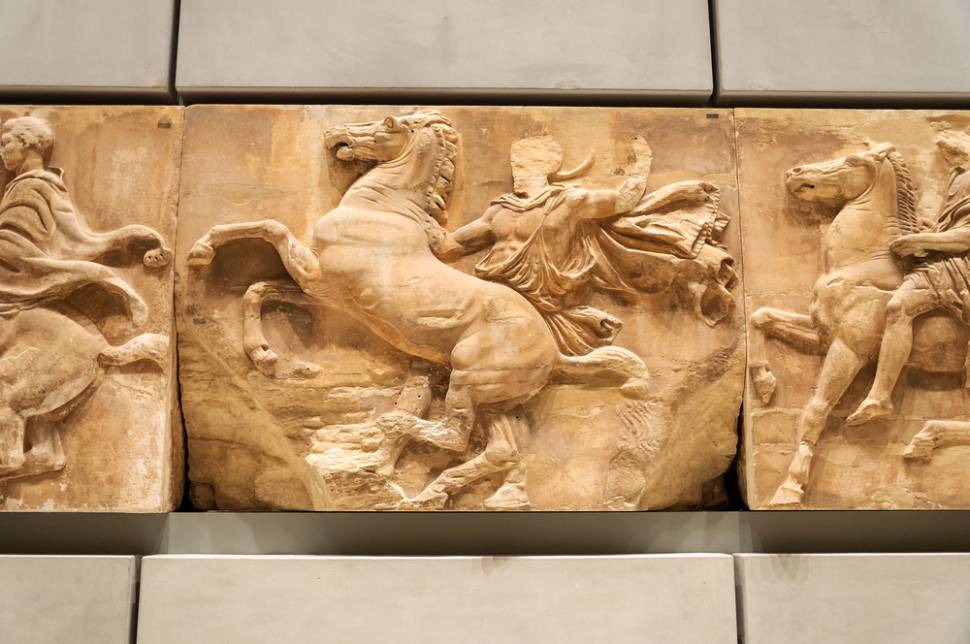Phidias: The Great Sculptor of Antiquity And His Life

Phidias was one of the most important sculptors of the classical era. His reputation has been unscathed in time. As an artist, he was recognized from the period of antiquity. However, the information we have of his life is very little. He was born in Athens in the 5th century BC. He was the son of Charmides and belonged to a wealthy family.
His artistic talent became apparent very early. He started with painting and continued as a student. He stood out for his skills in painting and architecture, but he made a career in sculpture. None of Phidias’ works appear to have survived. Most are known from ancient references and through exact copies that the Romans made sure to create. Many authors, such as Plutarch, Plato, Philochorus, and Pausanias, refer to the work of Phidias in detail. Phidias was a bold and avant-garde artist. Let’s see what his contribution was.
Symbolism and advanced aesthetics led the world’s art
He expanded ancient Greek art and technique, giving it ”new life”. He is the creator of the art we now call Classical, which echoes intense idealism. He was inspired by ancient mythology, while in his early works, his themes were drawn from the historical events of the time. Phidias ‘ favorite materials were copper, gold, and ivory. At the same time, he rarely used marble, which existed in abundance and was chosen by his contemporary artists.
In his early works, he constructed a brass sculpture that was a cluster of Gods and men. It was created to dedicate itself to Delphi for the victory of the Greeks in the war against the Persians. The symbolism was clear as it connected people, such as Miltiades and other warriors, with the goddess Athena and god Apollo. Phidias created colossal statues and was the artist who, for the first time, combined gold and ivory.
Pericles and Phidias had a great friendship
Phidias maintained very close friendly relations with the leader of the Athenians, Pericles, in whom he had confidence. When Pericles took over (449 BC.) the reins of the city, he asked Phidias to contribute to its reconstruction. He gave him absolute control not only of the decoration of the site but also of the finances that concerned it.
Thus the name of Phidias was inextricably linked with the Acropolis of Athens as he designed and edited not only the construction of the buildings but also the sculptural decoration and many statues.
Accusations about two great men
Pericles financed the reconstruction and beautification of the Acropolis of Athens from the Fund of the Delian League. Opponents of Pericles, in order to damage his reputation and work, accused Phidias of embezzling part of the gold intended for the construction of the statue of Athena with other materials and of keeping the gold for himself. It is said that the gold of the statue of Athena was of great value.
Phidias succeeded in disproving the accusers. He had taken care that the golden section of the statue should consist of assembled pieces. So, he disassembled them, weighed them, and found their weight accurately corresponding to their price. After that, he was acquitted of the charge. But he did not escape prison. He was convicted of impiety after wanting to add Pericles and himself, as warriors, to the decoration of The Shield of Athena. The same charges were hurled against Phidias for the construction of the Statue of Zeus, and this time, he was imprisoned.
General supervisor and artistic curator
Phidias supervised the entire work on the Acropolis and is thought to have illustrated the Frieze, pediments, and metopes of the Parthenon. The quality of his work, the harmony of his work, and his artistic value are evident through the reliefs of the Parthenon. The sculptures of the Parthenon were carved in marble. They were colored, and in many of them, there were metallic details. They are considered unique masterpieces in terms of the conception of composition and their aesthetic impact. The movement in the figures, the clarity in the rendering of the human body, and the emphasis on detail become evident in the sculptures of the gables of the Parthenon, where the figures were worked out even from the reverse side that was unseen.
As for the life or the end of Phidias, there is not much information. He may have died in prison after being convicted of impiety or being exiled. Phidias ‘ work inspired artists from the Hellenistic period and continues to influence the aesthetics of the art world.
Have you read?
New Opportunities In The Commercial Real Estate Market by Brian Wallace.
The Four-Step Guide to Offering Meaningful Credentials by Danny King.
Five Exciting New Innovations That Will Help Your Business Grow in 2023.
How to Perform Underwater Meditation by Prof. M.S. Rao, Ph.D.
Add CEOWORLD magazine to your Google News feed.
Follow CEOWORLD magazine headlines on: Google News, LinkedIn, Twitter, and Facebook.
Copyright 2024 The CEOWORLD magazine. All rights reserved. This material (and any extract from it) must not be copied, redistributed or placed on any website, without CEOWORLD magazine' prior written consent. For media queries, please contact: info@ceoworld.biz









